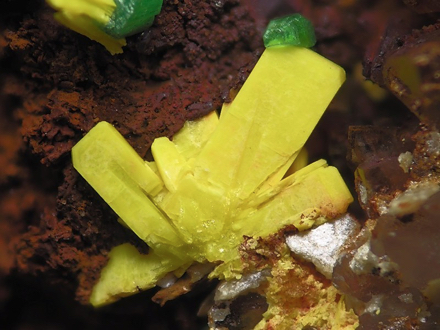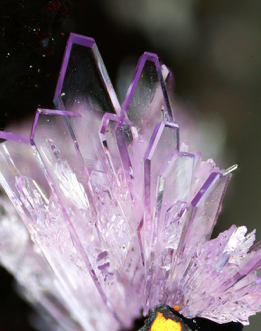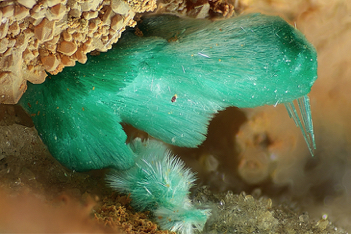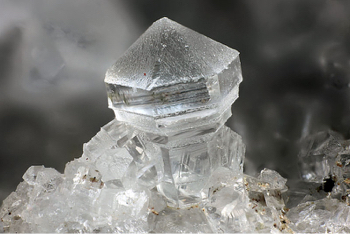February 2020 Program Information
February 2020 Program
Mike Pabst presented “Atlantic Micro-mounters’ Conference Auction – Beautiful Small Minerals from the George Reimherr Collection”.Mike has been photographing some of the 500 specimens for the conference and shared some of the photos with us. The site for information about the conference is http://dcmicrominerals.org/ The conference is April 3-5 in Alexandria.
A portion of George Reimherr’s collection will be sold at the auction during the meeting. He mounted his specimens in clear plastic boxes lined with black paper, which sometimes failed to securely attach the mineral. However, some folks appreciate the original mounts by Mr. Reimherr. He was an organized and professional collector of micros who was revered in the mineralogist community. Mr. Reimherr passed away in 2017.
Mike gave us some information about studying and photographing micros. A good stereo microscope is a must, and good ones are around $500. With a stereo microscope, it is easy to view the specimen, and the specimen can be easily turned to get the best angle.
Although it is possible to take photos through the stereo microscope, Mike prefers to use an Olympus digital camera with a macro lens and Raynox DCR-250 “supermacro lens” that attaches to the filter threads of the macro lens. With one click of the shutter button, the camera takes 25 separate single shots at different depths of focus so that each may be viewed separately to ensure that the best selection be chosen.
Photos may be cropped to obtain a desired FOV (field of view), and with these good lenses, not too much resolution is lost. (Mike compared the letter “I” from “In God We Trust” on a dime to explain that this width is about 0.25 mm, which is the size of some of the smaller micro crystals.)
Depending on the color of the mineral, LED, colored, incandescent or natural lighting may be used to obtain the best photo. Certain minerals are of such unique and high-intensity color that no camera can reproduce it. And some color quality is lost in transition from the camera to the computer, and especially to the projector.
Mike had some truly awesome photos to show us. I’ll mention a few here:
• From the DR Congo – dewindtite, a uranium mineral with FOV 2 mm
• From Northern Ireland – gmelinite, which looks like a glass decanter and stopper with FOV of 5 mm
• From Gold Hill, Utah – a very rare mixite that looks like yellow-green sea urchins with a FOV of 3 mm
• From Indian Mountain in Alabama – strengite, a beautiful red-violet mineral with a FOV of 3 mm
There were many others too numerous to mention, and Mike did a wonderful job of photographing these gems of the earth! Thank you so much for sharing.




NOTE: These photos are sourced from Mindat.org, and are NOT examples of Mike Pabst’s superlative micromineral photography

